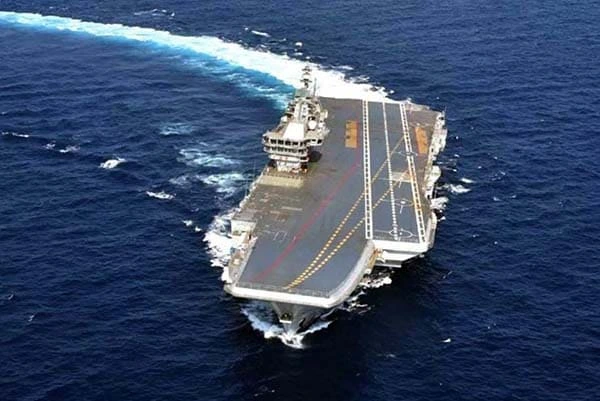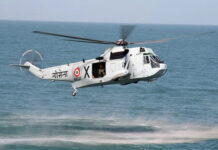The Defence Procurement Board (DPB) has accorded in-principle approval to the Indian Navy’s proposal for construction of a second aircraft carrier at a cost of around Rs 40,000 crore, signalling the government’s readiness to go for the second indigenous aircraft carrier, to be known as IAC II.
The construction of IAC-II with a displacement of 45,000 tonnes with the envisaged specifications, was strongly being pushed by the Indian Navy. Having a three-carrier battle group is important for the Indian Navy as a show of strength. The Navy has been pitching for three aircraft carriers to deal with China’s growing naval prowess and its growing influence over the Indian Ocean region.
The Navy currently has two aircraft carriers— the INS Vikramaditya (formerly the Russian Admiral Gorshkov) and the INS Vikrant, which was indigenously made. But keeping in mind the Chinese pressure in the Indian Ocean Region, the Navy is looking at a larger force. Three carriers also ensure that the Navy has two carriers at all times — one for the Arabian Sea and the other for the Bay of Bengal.
An enlarged fleet also gives India the flexibility to exert influence in the faraway seas with its presence.
Indigenous Aircraft Carrier-I
INS Vikrant (IAC I), India’s first indigenously-built aircraft carrier was commissioned in September 2023 by Prime Minister Narendra Modi. Built at a cost of around Rs 23,000 crore, INS Vikrant has a sophisticated air defence network and anti-ship missile systems. It has the capacity to hold 30 fighter jets and helicopters. At the commissioning ceremony of the vessel, Modi called it a “floating city” and that it is a reflection of India becoming self-reliant in defence.
INS Vikrant displacing 44,800 tonnes is powered by four General Electric LM2500 engines which give it a maximum speed of 28 knots and an endurance of 7,500 nautical miles. The ship uses an aircraft-operation mode known as Short Take Off But Arrested Recovery (STOBAR) for which it is equipped with a ski-jump for launching aircraft, and a set of three ‘arrester wires’ for their recovery onboard.
In addition, the Navy also operates the 44,500-tonne carrier INS Vikramaditya, which also employs the STOBAR mechanism, procured from Russia under a $2.3-billion deal and inducted in November 2013.
Indigenous Aircraft Carrier-II
According to the sources, the IAC II will be kind of a repeat order of the IAC I. According to the plan, the IAC II will be built by state-run Cochin Shipyard. At present, India has two aircraft carriers — INS Vikramaditya and INS Vikrant. INS Vikramaditya is a Russian origin platform. The INS Vikrant has over 2,300 compartments, designed for a crew of around 1700 people, including specialised cabins to accommodate women officers. INS Vikrant has a top speed of around 28 knots and a cruising speed of 18 knots with an endurance of about 7,500 nautical miles.
Once the Cabinet clearance is accorded, the carrier will be with the Navy in 7-10 years.
The Navy had envisaged an IAC-2 with a displacement of 65,000 tonnes and a Catapult Assisted Take Off But Arrested Recovery (CATOBAR) system for launching aircraft as well as full-electric propulsion. However, a much bigger carrier with newer technologies would mean much higher cost and build time due to which the Navy has settled for a repeat of a Vikrant-sized carrier.
Three-Carrier Navy
For long the Navy has based its force structure centred around three carriers, The Parliamentary Standing Committee on Defence had noted that three aircraft carriers is an “unavoidable requirement” to meet any eventualities. It stated that taking into account the long coastline and hostile adversities on both sides of Indian peninsula, an aircraft carrier on both sides of coast is “quintessential” to uphold operational requirements.


















